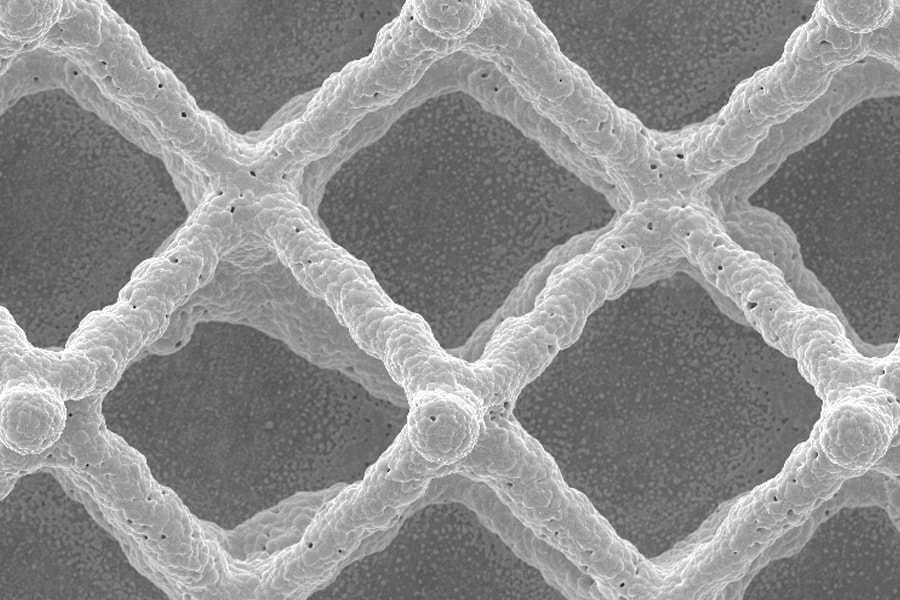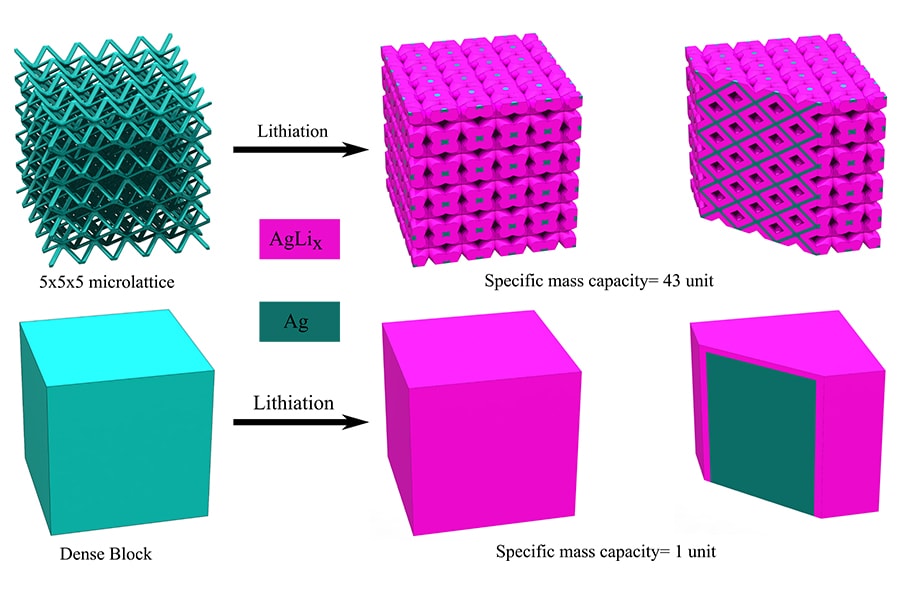
3D Printing the Next Generation of Batteries
Rahul Panat, an associate professor of mechanical engineering at Carnegie Mellon University, and a team of CMU researchers in collaboration with Missouri University of Science and Technology have developed a revolutionary new method of 3D printing battery electrodes that creates a 3D microlattice structure with controlled porosity. The researchers show, in a paper published in the journal Additive Manufacturing, that creating a 3D microlattice structure with controlled porosity can vastly improve the capacity and charge-discharge rates for lithium-ion batteries.
This revolutionary method will be very important for consumer electronics, the medical devices industry, as well as aerospace applications. This research will integrate well with biomedical electronic devices, where miniaturized batteries are required. Non-biological electronic micro-devices also will benefit from this work. And on a bigger scale, electronic devices, small drones, and aerospace applications themselves can use this technology as well, due to the low weight and high capacity of the batteries printed using this method.
"In the case of lithium-ion batteries, the electrodes with porous architectures can lead to higher charge capacities," Panat said. "This is because such architectures allow the lithium to penetrate through the electrode volume leading to very high electrode utilization, and thereby higher energy storage capacity. In normal batteries, 30-50 percent of the total electrode volume is unutilized. Our method overcomes this issue."

Lattice architecture can provide channels for effective transportation of electrolyte inside the volume of material, while for the cube electrode, most of the material will not be exposed to the electrolyte. Source: Additive Manufacturing 23 (2018) 70-78
The additive manufacturing method presented in Panat's paper represents a major advance in printing complex geometries for 3D battery architectures, as well as an important step toward geometrically optimizing 3D configurations for electrochemical energy storage. The researchers estimate that this technology will be ready to translate to industrial applications in about two to three years.
The microlattice structure found within lithium-ion batteries' electrodes was shown to improve battery performance in several ways such as a fourfold increase in specific capacity and a twofold increase in areal capacity when compared to a solid block electrode. Furthermore, the electrodes retained their complex 3D lattice structures after 40 electrochemical cycles demonstrating their mechanical robustness. The batteries can thus have high capacity for the same weight or alternately, for the same capacity, a vastly reduced weight, which is an important attribute for transportation applications.
The Carnegie Mellon researchers developed their own 3D printing method to create the porous microlattice architectures while leveraging the existing capabilities of an Aerosol Jet 3D printing system. The Aerosol Jet system also allows the researchers to print planar sensors and other electronics on a micro-scale, which was deployed at CMU's College of Engineering earlier this year.
Until now, 3D printed battery efforts were limited to extrusion-based printing, where a wire of material is extruded from a nozzle, creating continuous structures. With the method developed in Panat's lab, the researchers are able to 3D print the battery electrodes by rapidly assembling individual droplets one-by-one into three-dimensional structures. The resulting structures have complex geometries impossible to fabricate using typical extrusion methods.
"Because these droplets are separated from each other, we can create these new complex geometries," Panat said. "If this was a single stream of material, as in the case of extrusion printing, we wouldn't be able to make them. This is a new thing. I don't believe anybody until now has used 3D printing to create these kinds of complex structures."
The team, which includes mechanical engineering Ph.D. student Mohammad Sadeq Saleh, assistant professor of mechanical and aerospace engineering Jonghyun Park (Missouri S&T), and postdoctoral researcher Jie Li (Missouri S&T), is working on creating more complex 3D structures, which can simultaneously be used as structural materials and as functional materials. For example, a part of a drone can act as a wing, a structural material, while simultaneously acting as a functional material such as a battery.